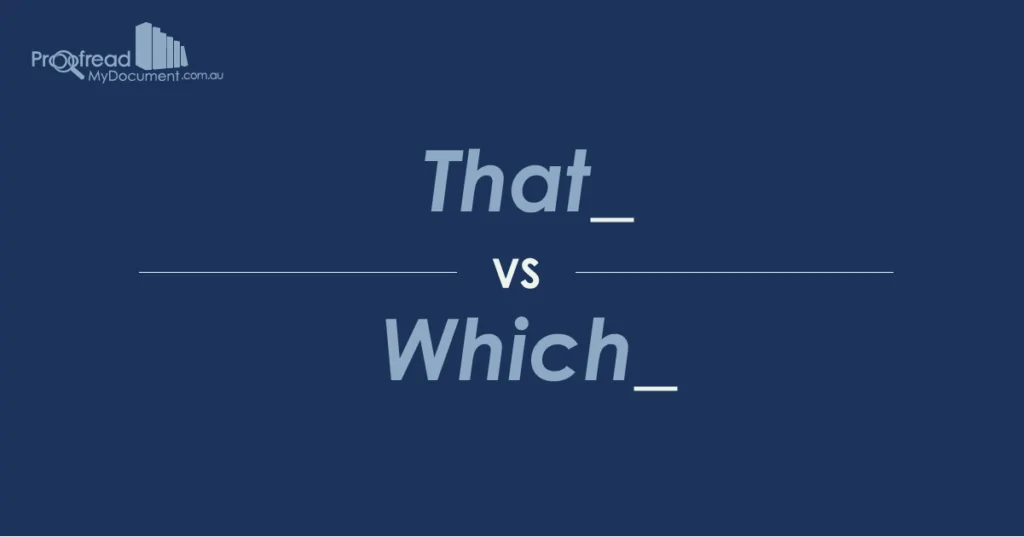Mix ups over when to use ‘that’ and ‘which’ are common, especially among those for whom English is an additional language. But there’s also a difference between Australian English and American English, which adds to the confusion.
To know whether to use ‘that’ or ‘which’ in your work, you need to know the difference between restrictive and non-restrictive relative clauses.
Restrictive Clauses
A restrictive relative clause helps us identify what a sentence is about. For example, if we were in a boat and spotted one of several sharks approaching, we might say:
The shark is getting closer!
This doesn’t tell us anything about the shark, though. So we could add a restrictive clause:
The shark that ate my grandmother is getting closer!
Now we know which shark we’re dealing with (i.e. the shark that eats grandmothers). In American English, ‘that’ is always used in cases like this. However, in Australian English, it’s also acceptable to use ‘which’ for restrictive clauses:
The shark which ate my grandmother is getting closer!
This is simply a matter of preference.

(Photo: Hermanus Backpackers/wikimedia)
Non-Restrictive Clauses
While restrictive clauses provide essential information that identifies what we’re talking about, non-restrictive clauses are used when we just want to add extra detail.
For example, were there only one shark approaching our boat, we might say:
The shark, which ate my grandmother, is getting closer!
In this case, there’s no doubt about the identity of the shark, so the information about the grandmother could be removed without changing the meaning of the sentence.
We signal that information is non-essential by setting it apart with commas. And as shown above, ‘which’ is always used for non-restrictive clauses (regardless of dialect).
That or Which?
There are two things to consider when choosing between ‘that’ and ‘which’:
- Is the clause restrictive or non-restrictive?
- Are you using Australian or American English?
The first is the most important. If removing the clause doesn’t change the overall meaning of the sentence, it’s non-restrictive. As such, you should always use ‘which’.
If the clause provides essential information, however, it’s a restrictive clause. If you’re writing in Australian English, you can use either ‘that’ or ‘which’ in this case. But if you’re writing for an American audience, you should use ‘that’ for all restrictive clauses.
You could even stick to ‘that’ for restrictive clauses generally, as this can help prevent confusion. This is just a stylistic choice in Australian English, though, so remember the following:
|
That or Which? |
Example Sentence |
Australian English |
American English |
|
That (Restrictive) |
The shark that ate my grandmother is getting closer! |
✓ |
✓ |
|
That (Non-Restrictive) |
The shark, that ate my grandmother, is getting closer! |
✘ |
✘ |
|
Which (Restrictive) |
The shark which ate my grandmother is getting closer! |
✓ |
✘ |
|
Which (Non-Restrictive) |
The shark, which ate my grandmother, is getting closer! |
✓ |
✓ |
Find this useful?
Subscribe to our newsletter and get writing tips from our editors straight to your inbox.



